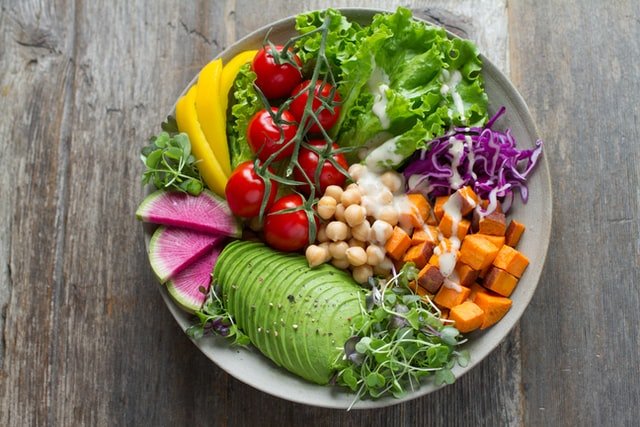Annatto seeds are a common ingredient used in tropical cuisine. Annatto seeds are used as a food coloring to add a yellow hue to many types of food and beverages.
Annatto seeds are also used in some foods as a preservative, antioxidant and coloring. In addition annatto seeds serve as an important source of tannin and iron in the diet of some people living in tropical countries, especially those whose diets are lacking in animal protein sources. Annatto seeds are also added to some cheeses and other foods to give them a red color.
Ingredient uses
The natural yellow color that is derived from the annatto seed makes it highly valued amongst cooks and chefs around the world.
Annatto seeds are small, flat and brown. The entire seed is used, so once you get it ground up you can use the powder for your food or cooking. Annatto seeds have a nutty flavor, but it is not overpowering.
The annatto seed is a common ingredient in many tropical dishes. It has tremendous versatility in the kitchen. It is used in stews, soups, sauces and even desserts. If you are trying to create a dish that has an orange or red color to it without adding food colorants, annatto seeds can be a great solution as well.
Tropical cuisines use this spice regularly because it adds both color and flavor to the dish. This makes annatto seeds very popular in Jamaican cuisine as well as other Caribbean food dishes where red or yellow dyes were unavailable. In fact, the name for this spice comes from the Spanish word for “seed”, which is “annato.” Annatto is not only used for its taste and color, but also its preservative qualities. Because of this dual-purpose nature, this spice has been used for hundreds of years with both food and dye products.
It wasn’t until recently that western cultures discovered how to use annatto seeds in their cooking.
Annatto seeds are widely used in tropical cooking to provide a vibrant yellow or orange color. Annatto seeds are most often used in curries, soups, and stews. The seeds are also ground into a powder to make a bright yellow or orange food coloring.
The name “annatto” is derived from the Spanish word for the fruit of the annatto tree, called “annato.” The Spanish first discovered the use of annatto seeds in Latin America, and from there annatto seeds spread throughout Europe and Asia. Annatto seeds have been used for centuries as a natural food coloring. They have also been used for medicinal purposes and as an aphrodisiac. Annatto seeds contain carotenoids that are responsible for their rich color.
Tropical cultures often use annatto seeds in everyday cooking as a substitute for saffron, which is more expensive and difficult to obtain. Annatto seeds can be found in Latin American, Caribbean, Afro-Caribbean, African, and Asian cuisine. In addition to providing a distinctive color to dishes, they also add a slightly sweet taste. For this reason they are sometimes referred to as “false saffron.”
Annatto seeds are available at most grocery stores in their raw form or
Annatto seeds are derived from the tropical achiote tree, which grows to about 20 meters in height and produces flowers that range from pink to red in color. The fruit of the achiote tree is covered in a bright orange fleshy pulp, and inside there are about 25 small black seeds. These seeds, known as annatto, have been used for centuries as a food coloring due to their brilliant yellow color.
The warm yellow hue that these seeds give to food has inspired many dishes in tropical cuisine. The most common use of annatto is in making cheese and butter products, but it is also commonly found in stews, rice dishes and soups, including the famous Mexican dish called “arroz con leche.”
Annatto seeds are commonly used as a natural food coloring (also known as a pigment) in foods that come from tropical regions. Some of the most common foods that you find annatto seeds in are cheese, butter and margarine, cakes, candy and biscuits. Annatto seeds are also added to some Latin American dishes, such as rice and beans, fish stews and various sofrito sauces.
Tropical fruits such as papaya, mangoes, carrots, oranges and pumpkins also contain annatto seeds. The seeds are also used to color cheese in orange like cheeses such as cheddar and Monterrey Jack. Other common uses of annatto seeds include:
1. Stabilizing emulsions in ice creams and icings
2. Adding color to dairy products like butter and cheese
3. Color Alteration of canned meats – The Food Industry has a program called “Color-Lok”, where they add annatto extract to canned meats to make them appear fresh even when they have been sitting on the shelf for weeks or months at a time.
4. Carotenoids for Vitamin A – Annatto seeds can be found in vitamin supplements that are aimed at preventing or alleviating night blindness which is caused by lack of
Annatto seeds are used to add color to food. The small, hard seeds are the seed pods of a tropical plant. Annatto seeds were historically used for body paint and cosmetic purposes, but nowadays they are primarily used as a food coloring.
The seeds are valued as an inexpensive natural food coloring because of their orange-red color and the fact that annatto is not toxic.
Annatto is typically found in Latin American cuisine and in the Caribbean, where it is often referred to as “achiote”. In the United States, annatto is most commonly used in Worcestershire sauce and to color cheese (pimento cheese). In the past, annatto seeds have also been used to make lipstick and rouge.
Annatto is also a common ingredient in fish stews such as caldo de pescado and ceviche, lending them a characteristic reddish hue.
In India, it is called Haladi Pippali or Halodhia Pippali. It has been mentioned in ancient Ayurvedic texts as a stomachic.’
Annatto seeds come from the fruit of a tropical tree called the “Bixa Orellana”, which grows in Central and South America. The seeds are often referred to as “achiote”, which is also the Spanish word for the color yellow (which is where annatto seeds get their name).
Annatto seeds have been used as a food coloring agent for thousands of years, going all the way back to the Mayans and Aztecs. They were also used to dye fabrics and other materials. The tree was so important to the Incas that they made it a part of their history and folklore, using its red-orange pigment as body paint and painting images of the tree on their pottery.
Known as “annatto” or bixin in Europe, this plant has a long history as a food colorant. It’s mainly known for giving foods like cheddar cheese and butter their characteristic orange hue. Annatto can be found in many things we eat today such as Kraft Macaroni & Cheese®, Cremora®, Cheez Whiz®, Swiss Miss® Hot Cocoa Mix, some Heinz® Ketchup varieties, some Knorr® products, and even some forms of imitation crab!
Annatto is used in tropical cuis

